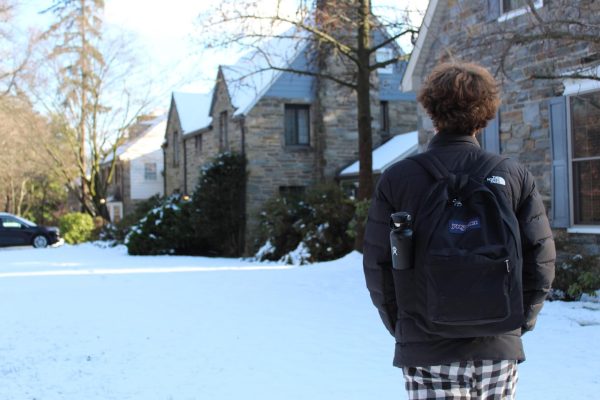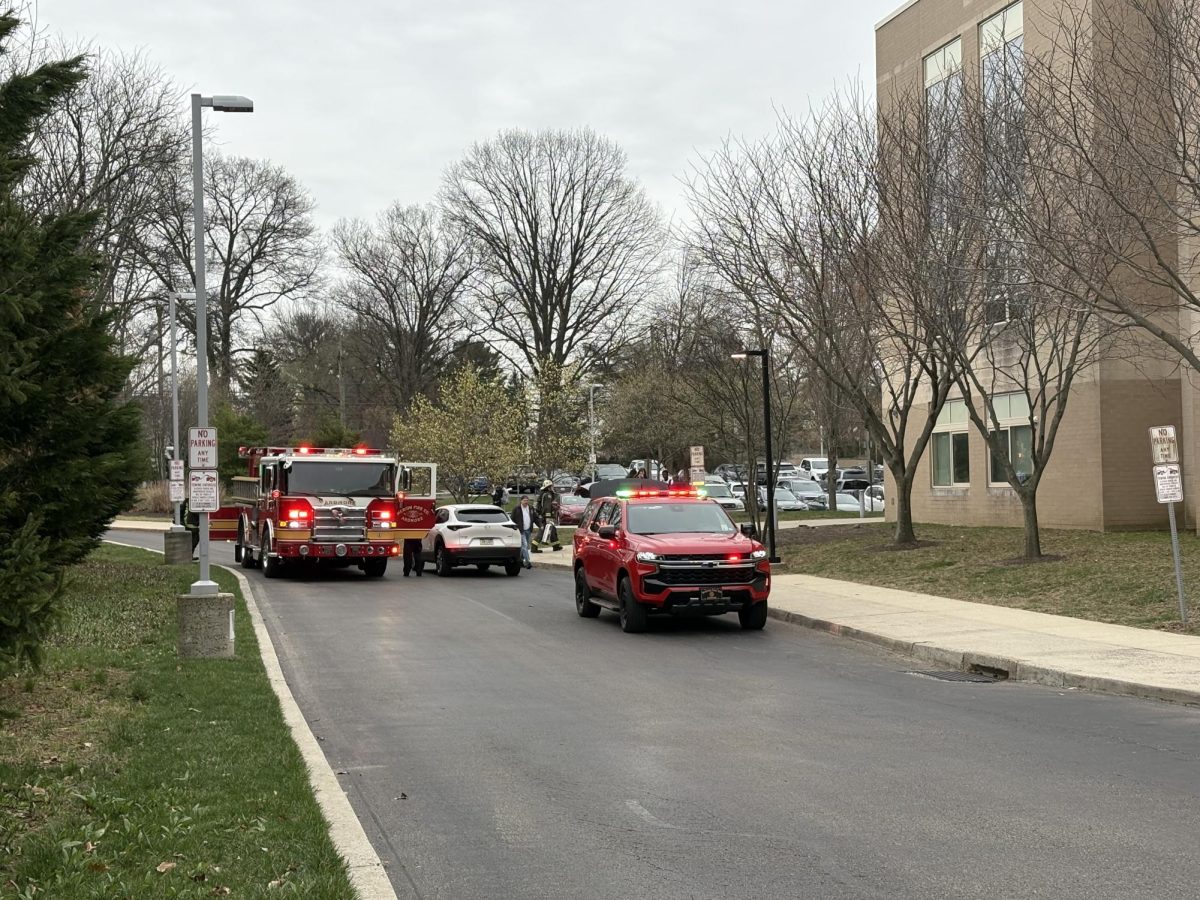
On January 22, parents were notified that the “walk zone” for students would be extended to 1.5 miles for the next school year. According to Dr. Yanni, this change was made in order to allow for efficient bussing because, due to the new start times, the buffer between each school’s start time has shortened. This shortened gap makes it challenging to continue offering bus transportation to every student who lives more than one mile from LM. A stated by a letter sent to parents from Yanni, this will “reduce late arrivals.” Yanni continues, “What had been asked of administration last year was to make sure high school starts at 8:30, which the school district is able to do, and then not push the elementary end time out past 04:00.” He continued to say that this was only made possible by consolidating the time in between each school’s start. This resulted in changes to the transportation system, including the extension of the walk zone, which is projected to affect around 500 students. However, this change in the walk zone has not been well received by much of the LM community. The extension led to the formation of Smart Start For All, a group of parents advocating against the change, as they believe it only provides a truly “smart start” to Harriton students and some LM students. Many parents and students have written letters to Yanni, sharing their concerns and encouraging him to reconsider the decision. Some concerns from students and parents involve safety.
Smart Start for All insists that “PennDOT has not yet reviewed these routes for safety” and that “a PennDOT safety review should have been ordered before requiring scores of teens to walk these long routes and cross these intersections,” especially as some of these roads“have had pedestrian and bike accident, and even deaths.” When interviewed, Yanni offered insight into LMSD’s correspondence with PennDOT, saying that “The district has documentation of what the hazardous routes are, and they were deemed hazardous for a long time,” and that he’s reached out to a representative at PennDOT to further reassure concerned parties that the issue is not being mishandled. Yanni continued to express that if residents believe that they will be required to walk or bike on a hazardous route, “[LMSD administration] will reach out to PennDOT to see if we can have an evaluation,” and that “if [students] have to walk along that hazardous route for a period of time, then [LMSD] owes you transportation so that you don’t have to walk on that hazardous route.”
However, late bus stops will also be removed from areas of the walk zone, resulting in many student athletes and club participants walking long distances in the dark. Vicky Dougherty, mother to a rising freshman, stated that she is “concerned about [her daughter] crossing two very busy intersections with heavy traffic during the morning commute time,” referencing Argyle and Wynnewood Road as well as Lancaster Road and Church Road. This lack of safety leads many to believe that parents will experience increased stress in transporting their children to school. Emily Wang ’26 asserts that “it’ll definitely put more of a strain on my parents. Now, I only have to ask them to drive me once every few weeks or so, but next year it may be constant.” Dougherty echoes this concern, stating that “it’ll potentially impact [her] work schedule, especially during pickup.”
Transparency is another complaint expressed by both parents and students. Last year, students completed a survey about preferences on the start time change. Many students used this as an opportunity to voice support for the later start time, but Gabby Andrade ’26, who now estimates that she will be walking half an hour to school, believes that “the later start time plan wouldn’t have received the support that it did if students and residents had been made aware that the trade-off for the later start times would be an extension of the walk-zone.” Many now note that the trade-off was not effectively communicated. Dougherty maintains that “in all of the meetings I attended on school start [times] and in all of the email communication that I saw about the start times up through December 2023, I never saw mention of an extended walk zone.” When confronted with these parent concerns, LMSD referenced board meetings in which the walk zone extension was discussed, but according to Smart Start For All, “LMSD has been deceptive about [their mentioning of the walk zone extension in previous board meetings],” as the document that they reference “does not even contain the word ‘walk.’ The document states: ‘Changes to how we route buses.’” When interviewed on the subject of transparency, Yanni did not deny that the trade-off of an extended walk zone was not necessarily run by parents, but justified it, saying, “we’re trying to be everything for everybody,” continuing to speak on how, in order to push back start times, which was highly advocated for by much of the community, it is necessary to find ways to make transportation more efficient. However, Harriton students will not be impacted by this change, as, according to Smart Start For All, “Harriton has no walk zone, every Harriton student has bus rights.” Instead of having LM students bear the full force of the extended walk zone, Smart Start For All proposes that a 0.5 mile walk zone be included for Harriton, allowing the LM walk zone to remain at 1 mile.
Another complaint concerns the weight that students carry, as many students at LM participate in sports and clubs that require them to carry considerable weight to school. According to KidsHeath, doctors recommend that students carry no more than 10 percent of their body weight to school. But many LM students carry much more than that. For instance, a computer weighs around three pounds, a full 1.5 inch binder is five pounds, and an instrument around fifteen pounds. Andrade, who lives in the new walk zone, anticipates “experiencing back pain due to the large amount of weight I will be carrying due to my binders, computer, and instrument.” Wang, a member of Science Olympiad, is concerned that “for commitments like Science Olympiad, [she] will be carrying textbooks and binders as well as [her] instrument to and from school.” Parents are also worried that this may prove especially difficult to manage in inclement weather, as Smart Start for All is concerned that many students will be “walking or biking long distances in rain, thunderstorms, and on icy roads without sidewalks, often while carrying heavy backpacks, instruments, and sports equipment.”
Rest assured, this conversation is unlikely to go away, as LMSD plans to administer a stakeholder survey to be sent out in the coming months to the Township. They anticipate that the walk zone will be the main topic of concern. According to Yanni, district administration “will actually create a goal of action steps about how we are going to evaluate and then keep the community abreast of [the topic of the walk zone],” continuing to say that the extended walk zone “is a topic that people are going to continue to feel passionately about, so it’s going to be a topic that I am going to continue talking about.” It doesn’t seem as if a reevaluation of the policy is off the table either, as he claims that “just like [LMSD administration] does with everything else, as we move forward with this, we’ll evaluate it” and that if they find better ways to accommodate busing, they will explore those options.








C Lawrence • Mar 4, 2024 at 12:16 PM
As I understand the larger issue behind all these changes, later start times have to do with “optimal” learning times for adolescents. Has LM tried a pilot study to test the late start assumption? Measure the class outcomes (grades) of late start students vs last year’s comparable first clsss grades.